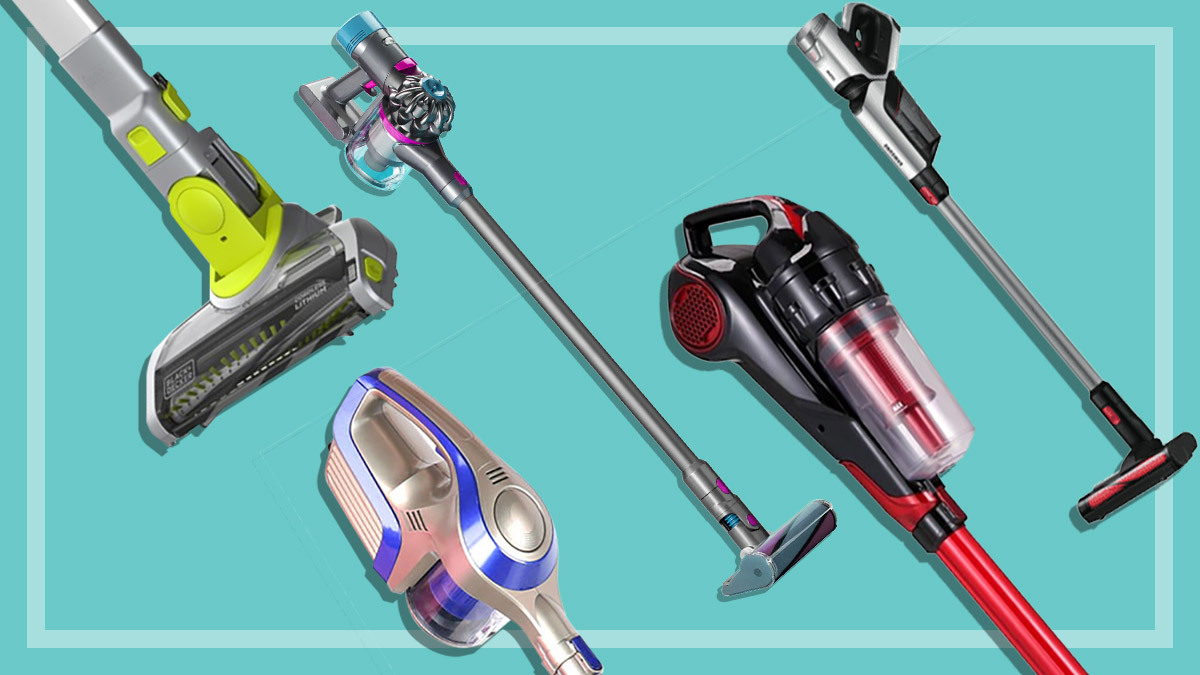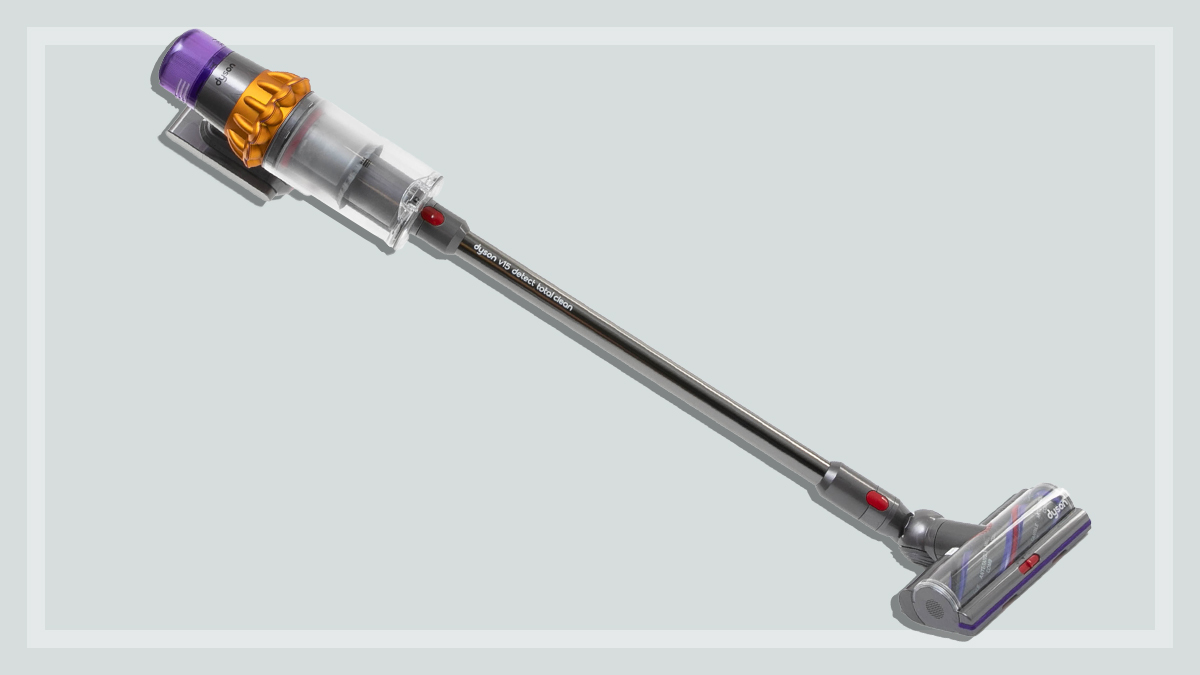Get our independent lab tests, expert reviews and honest advice.
How to buy a great stick vacuum

Stick vacuum cleaners are useful around the kitchen and other areas of the home when you have an annoying spill and don’t want to get out the dust pan and brush. Easily hidden away in a cupboard, they take up less room than a traditional barrel or upright vacuum cleaner and most can be split into two devices, with a handheld vacuum being part of the stick vacuum.
On this page:
- Stick vacuums: What you need to know
- How much do stick vacuums cost?
- Key features to consider
- Australia's best stick vacuum brand
- How to care for your stick vacuum
- How and when to dispose of your stick vacuum
Stick vacuums: What you need to know
When it comes to vacuum cleaners, power is no guarantee of cleaning performance – it’s the overall design of the cleaner that makes the difference. That said, stick vacs aren’t usually expected to perform as well at cleaning carpet as a standard vacuum cleaner.
For handheld models (as for most cordless appliances), the more juice in the battery, the better the performance is likely to be. Handheld vacs generally lose power as their battery charge runs down. However, new designs and technology, such as lithium-ion batteries, have led to improved running times and dirt pick-up.
How much do stick vacuums cost?
We’ve tested stick vacuums that cost as little as $79 for a budget Kmart model and as much as $1400+ for high-end LG and Dyson models, with a median price of $599.
| Specification | Average | Variation |
|---|---|---|
| Charging time for a stick vacuum | 4 hours | 2.6–8 hours |
| Stick vacuum weight | 2.8kg | 2.1–4.1kg |
| Running time on max | 13 minutes | 6–33 minutes |
| Dust collector capacity | 0.4L | 0.2–0.6L |
| Noise level on max (decibels) | 74 dB | 67–84 dB |
Key features to consider
Regardless of the brand and model, here are some vital features to keep in mind before buying a stick vacuum.
Charging and running time
Look for a stick vac that runs for a useful length of time and doesn’t take too long to charge. Some may need to charge overnight, or even longer. Our data shows that stick vacuums take roughly four hours to charge on average, and you may only get around 13 minutes of runtime depending on the power settings and surface you’re cleaning.
Some only run for six minutes on max, so if you have a large area to clean, you might need a stick vac that allows you to swap over to a spare battery. Using a motorised tool on the vacuum will also deplete the battery.
CHOICE tip: Read the fine print about manufacturers’ long battery claims: they may refer to non-motorised tools (such as a crevice tool) or low/eco power modes.
Light, quiet and easy to manoeuvre
Try out the vacuum in the shop to see if it’s all of these things. For stick models, check that it moves easily over both carpet and hard surfaces. Some of the models we’ve tested weigh up to around 4kg, which may not be noticeable if you’re using it on floors, but it could become tiring if you’re reaching up to clean ceilings and fans, for instance.
Floor heads
Many stick vacuums come with a standard motorised head suitable for both carpet and hard floors. Some have a special fluffy or soft head just for hard floors, which tend to work well. Some high-end stick vacuums have the ability to detect the surface you’re vacuuming, adjusting the suction accordingly without the need to swap heads.
Filter
This should be easy to remove and clean or replace. If you have asthma or allergies, consider a vacuum with a HEPA filter or one that performs equivalently to one. These are designed to filter at least 99.97% of dust particles 0.3 microns in size.
LCD display
Mid to high-end stick vacuums may have a display screen giving you useful information about remaining battery run-time (which can vary depending on suction power), or even the amount and size of dust you’ve collected. They may also inform you if the vacuum has an obstruction, or if the filter needs cleaning. More basic models may still indicate when the battery is running low by using different coloured lights or a progress bar.
Tools

The standard items to check for are a dusting brush and crevice tools. Other items may include a mopping attachment, flexible crevice tool for hard-to-reach areas or a pet hair brush.
Depending on the model, some tools can be stored on the stick vacuum itself, while others can be stored on or inside the charging cradle/dock. If accessories can be neatly stored, then they’re less likely to be lost or hidden away in a drawer.
2-in-1 models
These can be used as either a stick or a handheld vacuum. They usually have a trigger to release the handheld vacuum located on the torso of the stick.
Variable power/suction
This is a common feature and allows you to increase the suction for tough areas, or decrease it for cleaning items like rugs or curtains. Many models will have a ‘boost’ mode for extra power, but this will drain the battery faster.
Self-emptying function
Some manufacturers including LG and Samsung have introduced ‘self-cleaning’ stick vacuums which empty the (bagless) dust bin into a larger dust bag, which forms part of the charging dock. You do pay a premium for these models, and for the single-use bags themselves (which cost about $6–10 each depending on the brand), but they could be handy for those with allergies.
Battery
Lithium-ion (Li-ion) batteries are the most common battery type used in stick vacs. They’re generally better-performing and longer-lasting than nickel-cadmium (NiCd) and lead-acid batteries, which are found in older vacuum models.
Check the warranty details for the battery. Some warranties only cover the battery for a few months, even if they cover the cleaner itself for a year or more.
Many brands offer you the ability to easily swap out your stick vacuum battery for a spare pre-charged one which means extra running time for you. A good stick vacuum battery will hold enough charge for you to do what you need to do without frequently running out of juice. Some have battery indicators so you know in advance when your charge is running low.
Eventually your battery will lose its ability to hold a charge. Once that happens, it’s usually cheaper to upgrade your model, unless the battery can be easily switched out for a reasonably-priced replacement. Spare batteries can cost up to $199.
Switch
An on/off switch is easier for continuous operation than a trigger that needs to be held down.
Fallout flap
This prevents dirt falling back out of the vacuum when you carry it with the nozzle facing downwards, such as when moving between cleaning tasks.
Wall/floor mountable charging base
A handy wall-mounted base will help keep the vac readily accessible and fully charged. Some charging bases are floor mounted which means you can change the location of the base when you want to. Make sure they’re placed on a stable, level surface.
Wet and dry
Some models can suck up wet material or liquids. However, they can usually only take a fairly small amount (about 150mL) and you shouldn’t fill the bin with liquid past the indicated maximum level. The bin and filter need to be cleaned and dried separately afterwards. Other stick vac models have a separate mop attachment which doesn’t have a suction capability.

Australia’s best stick vacuum brand
We’ve identified the stick vacuum brand based on our test results and feedback from our members on brand satisfaction and reliability.
Our testers have cleaned carpets (and more) with over 150 stick vacuums since 2019 and we combine this data with surveys from our members about the vacuums they own. We use this data to determine which brands are the most reliable, and which have the best customer satisfaction (something we can’t easily test in our labs). This feedback, and our test results, are combined to determine the best stick vacuum brand of 2025.
Best stick vacuum brand for 2025: LG
For the second year in a row, LG is the best stick vacuum brand for 2025, with strong scores in our test results in addition to being a reliable brand with highly satisfied customers.
Best stick vacuum brand 2025 scores
- LG: 78%
- Dyson: 74%
- Bosch: 69%
- Electrolux: 69%
- Vax: 64%
- Kmart (Anko): 63%
- Hoover: 61%
It’s important to note that the performance of specific product models may vary quite significantly, so don’t assume that one brand’s products are the best across the many different features, functions and price points.
To find out which stick vacuum models we recommend based on our test results, and to make sure you buy the best, click on the ‘Recommended’ box in the filters section of our stick vac reviews.
Best Brand Stick Vacuum 2025: LG
Best brand score
LG: 78%
Dyson: 74%
Electrolux: 69%
Bosch: 69%
Vax: 64%
Kmart (Anko): 63%
Hoover: 61%
Models tested
LG: 20
Dyson: 23
Electrolux: 11
Bosch: 10
Vax: 10
Kmart: 7
Hoover: 6
Recommended models
LG: 18
Dyson: 15
Electrolux: 1
Bosch: 3
Vax: 2
Kmart: 0
Hoover: 0
Average test score (%)
LG: 81%
Dyson: 81%
Electrolux: 73%
Bosch: 77%
Vax: 76%
Kmart: 66%
Hoover: 71%
Reliability (%)
LG: 68%
Dyson: 65%
Electrolux: 76%
Bosch: 64%
Vax: 60%
Kmart: 72%
Hoover: 61%
Satisfaction (%)
LG: 81%
Dyson: 81%
Electrolux: 79%
Bosch: 79%
Vax: 69%
Kmart: 73%
Hoover: 74%
Recommended ratio (%)
LG: 90%
Dyson: 65%
Electrolux: 9%
Bosch: 30%
Vax: 20%
Kmart: 0%
Hoover: 0%
The Best Brand recommendation for vacuums is based on our test results for stick vacuums over the past six years, as well as customer satisfaction and reliability information submitted by CHOICE members on their experience with the brand.
The recommendation is given to companies with a clear lead over their competitors during the test period, and no more than two recommendations are given during each period.
Best Brand eligibility is tough – to be considered, we must have tested a minimum of five models, and a brand must have received a minimum of 50 responses to the CHOICE member survey. Additionally, brands must score a minimum of 60% and be above the average score for average test score, reliability and satisfaction for consideration.
The following criteria determines the Best Brand recommendation.
- Average test score: 40%
- Brand reliability: 30%
- Customer satisfaction: 20%
- Recommended ratio: 10%
Average test score
This measures the average score for all stick vacuum models tested in the CHOICE labs for each brand. Our testers assess:
- dirt pick up from a hard surface
- cleaning corners and edges
- pet hair removal
- thorough carpet cleaning
- quick carpet cleaning
- car cleaning
- ease of use (manoeuvrability, emptying and cleaning dirt receptacle, operating controls, using and storing supplied accessories).
For more details, check out how we test stick vacuums.
Brand reliability
Our customer insights team surveyed several thousand members about their stick vacuums. The brand reliability score is determined based on the proportion of respondents who reported a problem with their vacuum in the last 12 months.
Customer satisfaction
Our survey also asks how satisfied members are with their barrel/upright vacuum. So even if a vacuum has a fault after six months, it’s still possible for it to have a high satisfaction score – perhaps the company has customer service that goes beyond expectations, or the product is simply too good, despite some performance quirks.
Recommended ratio
In order to be recommended, a stick vacuum must earn a CHOICE Expert Rating of at least 80%, and at least 70% for hard floors. The CHOICE Expert Rating, our overall score, is made up of hard floor dirt pick-up (30%), ease of use (30%), pet hair removal (15%), thorough carpet clean (10%) and quick carpet clean (15%).
We then calculate the percentage of vacuums that CHOICE recommends for each brand. The greater the number of models that earn a recommendation in relation to the number of models tested, the higher the recommended ratio score.
How to care for your stick vacuum
Due to their smaller dust bins, stick vacuums need to be emptied more frequently and this can be fiddly depending on the model. Hair and fluff must also be removed regularly from the rollers.
You should wash the filter once a month, and replace it when necessary (it can cost up to $40 for a filter depending on the type and model, but it should last for a year or so before needing replacement). You should also regularly check your stick vac for any obstructions.
How and when to dispose of your stick vacuum
With regular maintenance you can expect your stick vacuum to last many years. Most stick vacuums die after the rechargeable lithium-ion battery gives up, so replacing this can solve a lot of problems and prolong the life of your vacuum. The cost of a new battery can vary – it can cost up to $199 to replace a Dyson battery, for example – and a new filter can also do wonders for your vacuum.
When you’re finally due to upgrade, don’t put your old stick vacuum into landfill as the batteries contain toxic metals. Visit the Australian Battery Recycling Initiative to find out where to recycle your old stick vac or contact your local council for e-waste collection information.






